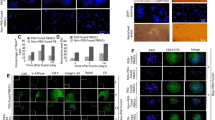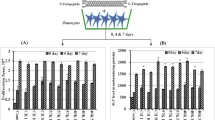Abstract.
Fusion and activation of osteoclasts are the final two events in osteoclastic bone resorption. To investigate the regulatory mechanism of these events, mononuclear osteoclasts (preosteoclasts, pOCs) were isolated from co-cultures of mouse osteoblastic cells and bone marrow cells. Most of the pOCs cultured without any additives died within 12 h. Survival of pOCs was supported by addition of either osteoblastic cells or macrophage-colony-stimulating factor (M-CSF). pOCs began to fuse with each other after culture for 12 h in the presence of osteoblastic cells or M-CSF. However, the properties of multinucleated osteoclast-like cells (OCLs) induced by osteoblastic cells were considerably different from those induced by M-CSF. Fusion of pOCs induced by osteoblastic cells was retarded after culture for 24 h. In contrast, M-CSF-induced fusion of pOCs continued throughout the 48-h culture period, which was not inhibited by addition of calcitonin. When pOCs together with osteoblastic cells were cultured for 48 h on dentine slices, many resorption pits were formed on the slices. Calcitonin completely inhibited the fusion and pit-forming activity of pOCs treated with osteoblastic cells. Resorption pits were hardly detected on dentine slices in pOC cultures treated with M-CSF. Osteoblastic cells prepared from osteopetrotic (op/op) mice, which cannot produce functional M-CSF, stimulated the fusion and pit-forming activity of pOCs. Recombinant RANKL (receptor activator of NF-κB ligand), a cytokine which is produced by osteoblastic cells and is responsible for osteoclast differentiation, induced the fusion and pit-forming activity of pOCs. These results suggested that osteoblastic cells are involved in fusion and activation of osteoclasts through a mechanism independent of M-CSF production. RANKL appears to be responsible for fusion and activation of osteoclasts induced by osteoblastic cells.
Similar content being viewed by others
Author information
Authors and Affiliations
Additional information
Electronic Publication
Rights and permissions
About this article
Cite this article
Takami, M., Woo, JT. & Nagai, K. Osteoblastic cells induce fusion and activation of osteoclasts through a mechanism independent of macrophage-colony-stimulating factor production. Cell Tissue Res 298, 327–334 (1999). https://doi.org/10.1007/s004419900092
Received:
Accepted:
Issue Date:
DOI: https://doi.org/10.1007/s004419900092




